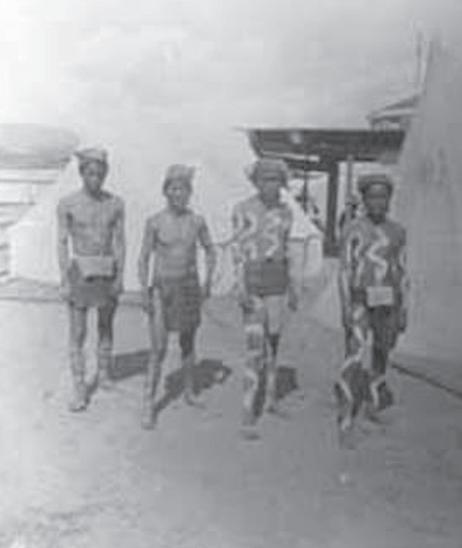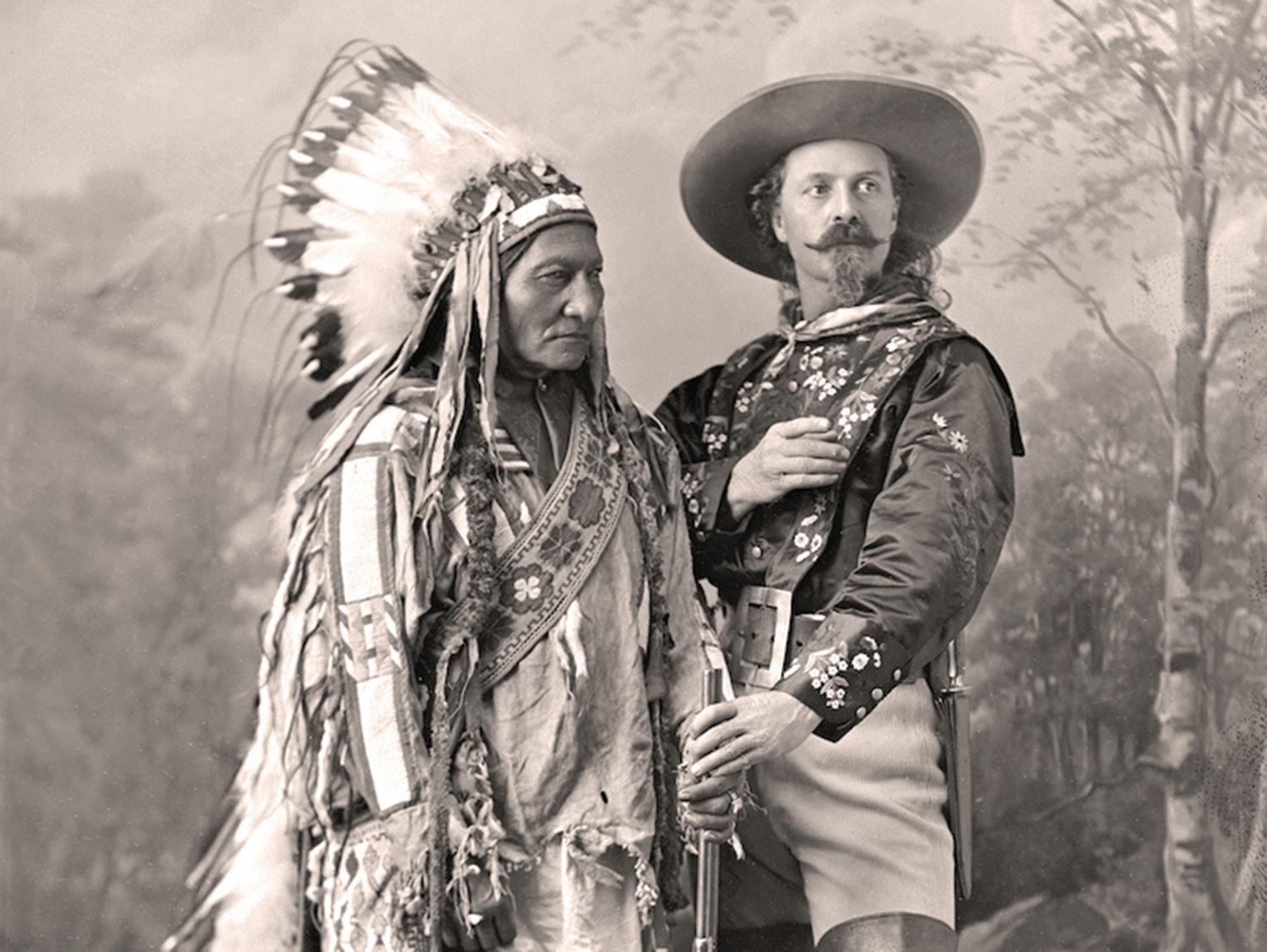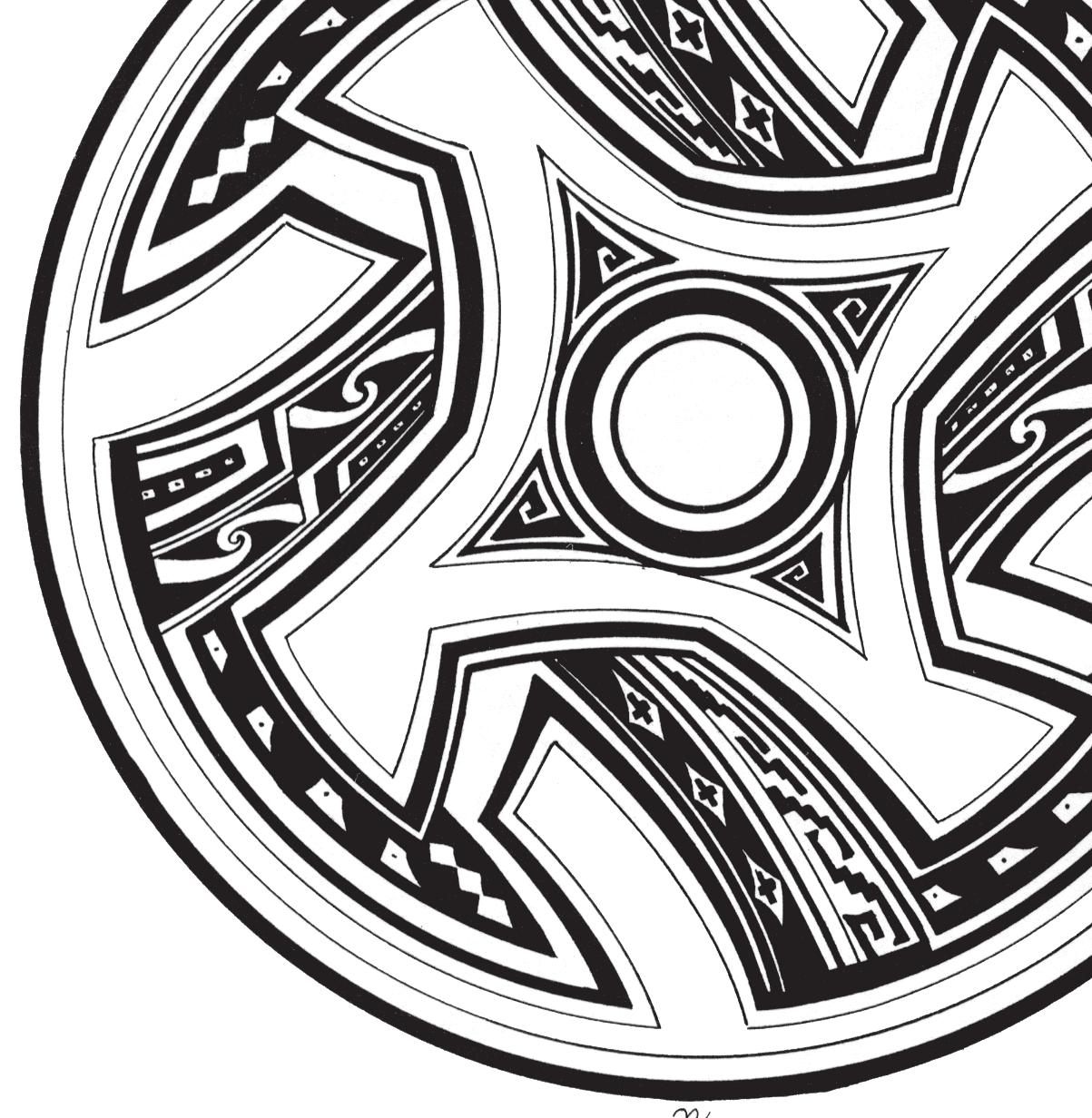
5 minute read
West by Southwest Ernie Bulow
CEREMONIAL ORIGINS CEREMONIAL ORIGINS
CLOSING IN ON 100 YEARS CLOSING IN ON 100 YEARS


ZUNIS AT TERTIO-MILLENIAL CELEBRATION
State and County fairs were local adaptations of the popular World Fairs and Expositions. These fairs were immensely popular, probably because of the scope of them. They went on for three to six months and even longer and featured everything new under the sun. Mainly they gave bragging rights to the sponsoring country.
At one fair the famous Geronimo was autographing photos of himself. For the Great Columbian Exposition of 1910, the Santa Fe Railroad built an entire multistory Pueblo.
In 1883 Frank Cushing, the eccentric anthropologist who lived with the Zunis, took a group of those Pueblos to Santa Fe to take part in the so-called “Tertio Millennial” —the three hundred and thirtythird birthday of the city. The Zunis ran and danced with the other New Mexico tribes.
The event was designed along the established lines like the first state fair held in New York in 1841. Since the organizers were promoting New Mexico Territory as a place ripe for business development and investment, it was called the Mining and Industrial Exposition.
There were all sorts of displays and entertainments and the New Mexico Natives were a large part of it, involving most of the tribes in the Territory, minus some Apaches from the South. The Apache chief apologized explaining they were on the warpath at the time and couldn’t take time out for a celebration. In 1887 Buffalo Bill Cody started his Wild West Show. A little more than a decade later, there were more than 100 similar shows and circuses traveling around the United States and Europe featuring Indian performances. Though there has been endless controversy about this phenomenon, most of the Indians who joined these attractions were happy to get away from the boredom and poverty of the land the government had put them on.
In Montana the Crow Fair was launched in 1904, complete with rodeos, parades, and native dances. An unpopular Navajo Agent started the Annual Shiprock Fair in 1909, exhibiting produce, livestock, and one of the best collections of Navajo weaving ever seen.
This gathering has always been credited as the first Navajo Fair, but there is an interesting omission here. Rebecca and



Ernie Bulow
West by Southwest
by Ernie Bulow


John-Paul Vilette, in their recent book Navajo Weavings with Ceremonial Themes, push back that time-line by a decade. In the 1900 fair, she added prizes. With that heads-up, I found that in June 1900 author and publisher Charles Lummis had run a small piece in his magazine Land of Sunshine.
Meanwhile in Gallup, the city had been holding a big hoorah every Fourth of July almost since the founding of the town, usually featuring lots of races, foot and horseback. Long distance runners were especially important. Since the turn of the century, Zunis and Hopis had dominated marathons and even longer distances.
The Fourth celebrations all featured picnic fare and baseball games— Anglo vs Indian vs Cavalry from Ft Wingate. Those baseball games went on for many years and there were a number of local teams.
There are more stories about who started Gallup Inter-tribal Indian Ceremonial than Carter used to have little liver pills (as my grandmother would say). Here is the best reconstruction of that exciting period.
Mike Kirk, member of a large trading family with businesses all over the Navajo Reservation, had a profitable post west of town in Mentmore. If it was successful, it was mainly due to his wife who tended to business while he traveled with “his Indians.”
Around 1920 he sponsored a race team he was trying to get to the Olympics. He also promoted singers, boxers, a baseball team, and an Indian dance team made up of both sexes from several tribes, mainly Navajo and Zuni. He took his dance team to the Shrine Convention in Los Angeles and it was a huge hit.
In 1921 the Santa Fe Railroad hired Kirk for a gig at Grand Canyon. It was so popular the Indian group stayed all summer. So in 1922 he wanted to take “his Indians” on the Vaudeville circuit and tour the United States. In a 1952 article in New Mexico Magazine, one of the founders, a lawyer named John W. Chapman told the writer: “I told Mike it wouldn’t work…I told him that 90% of the success of his Grand Canyon show was because he had real Indians in a real setting. Put the show on here in Gallup,” I told him. Chapman goes on to say that it was his effort that sold the idea to the Gallup business community.
Later the Kiwanis Club would claim Ceremonial as their personal project, but Gallup newspaper editor Cy Rouse recalled that when Mike Kirk took the idea to them he found little support. According to Rouse only Dominic Rollie (postmaster) and Charlie Sabin
EUGENE LAMBSON, CRAZY JOE, EVON VOGT, MONKECITO, JESSE JOHNSON, GOLDIE AND ATHELING BOND (city clerk) encouraged Kirk at all. Gallup had just organized its first Chamber of Commerce that year and Rollie was president. They brought in a professional money man named H. E. “Hub” Phenicie who only stayed in Gallup a few years. Phenicie was also Sabin’s brother-in-law. For some reason he is usually given equal billing with Kirk. Phenicie wasn’t stupid and he could see the economic benefits of an annual Indian SOLDIERS SITTING ON CURB Day, but that was about the extent of his
MELIKA AND MIKE KIRK








